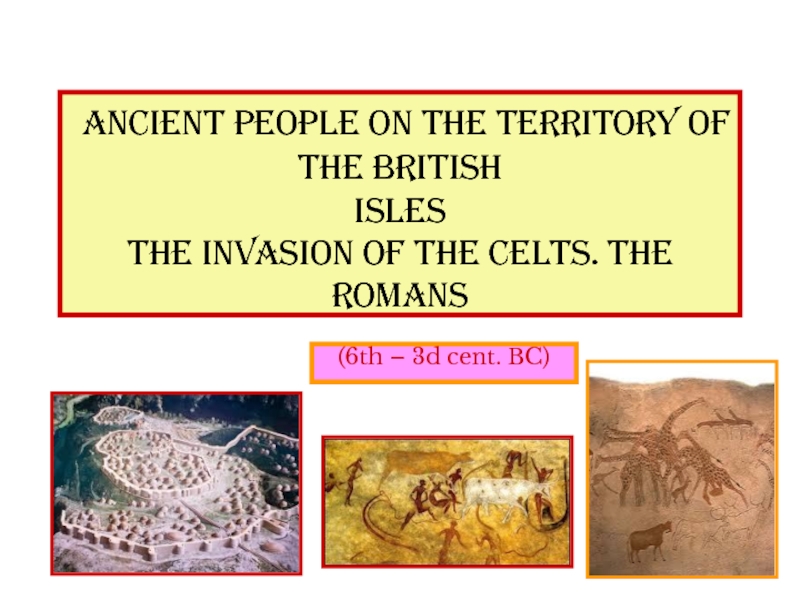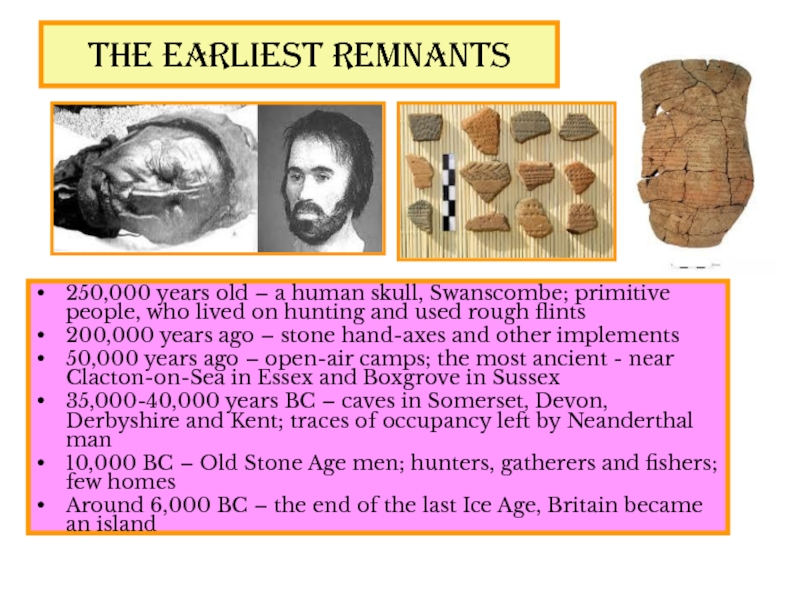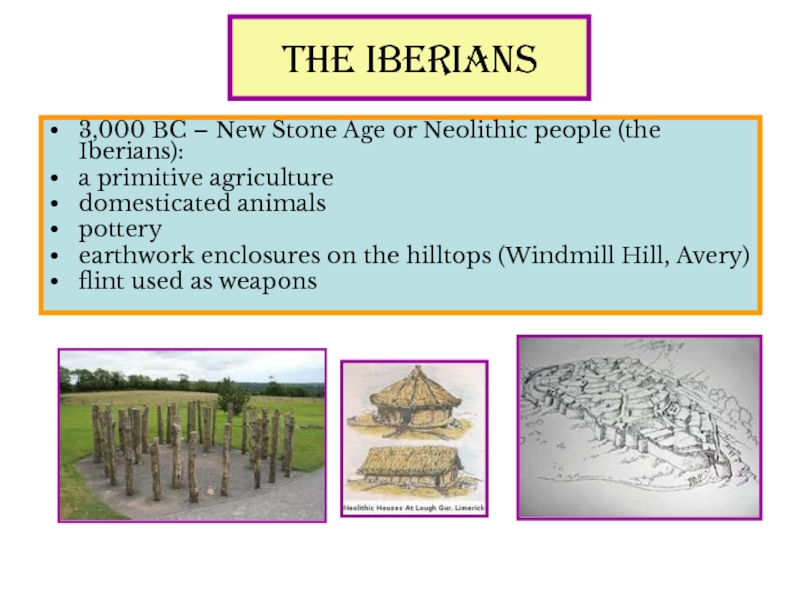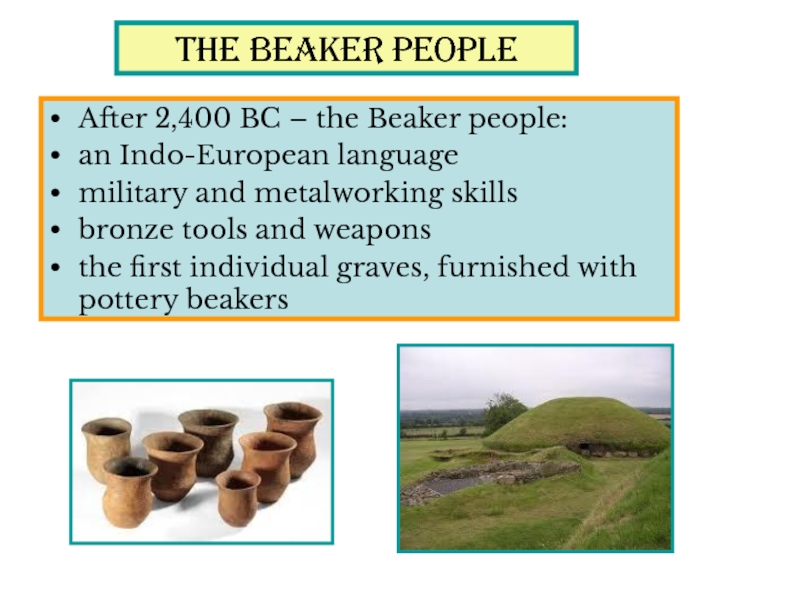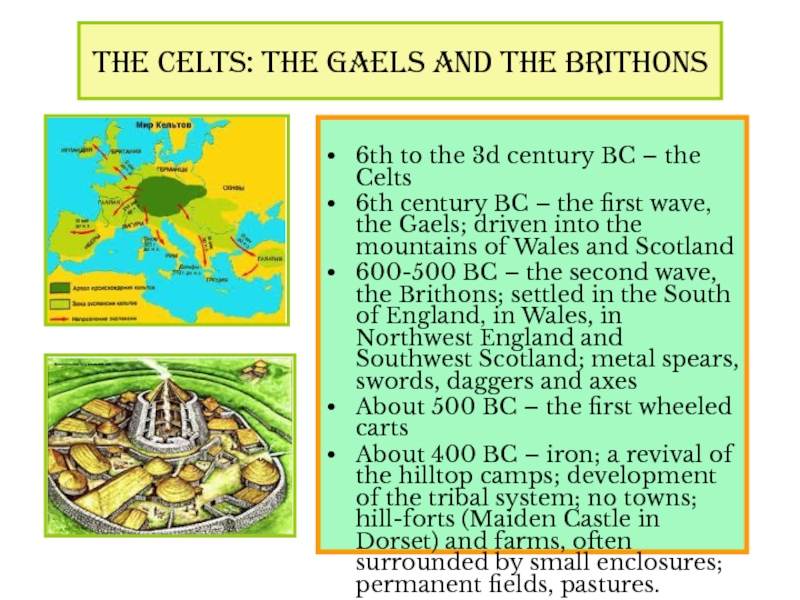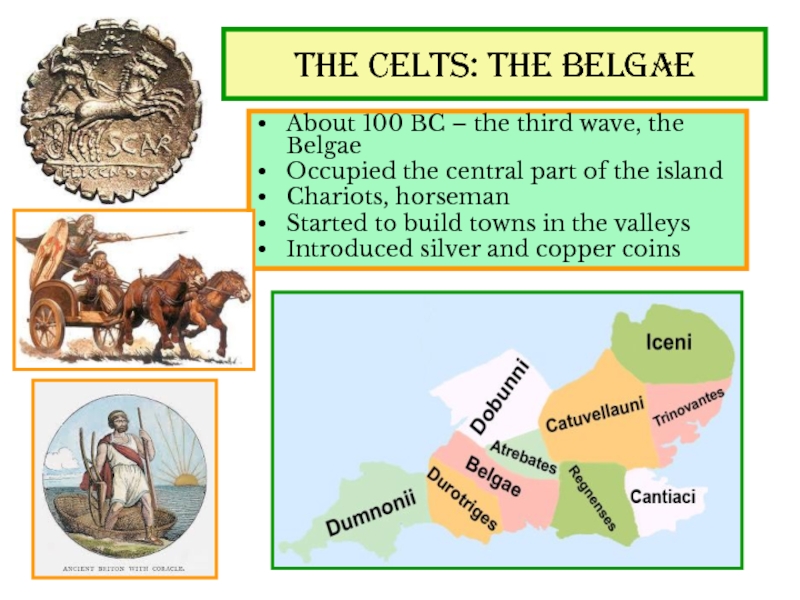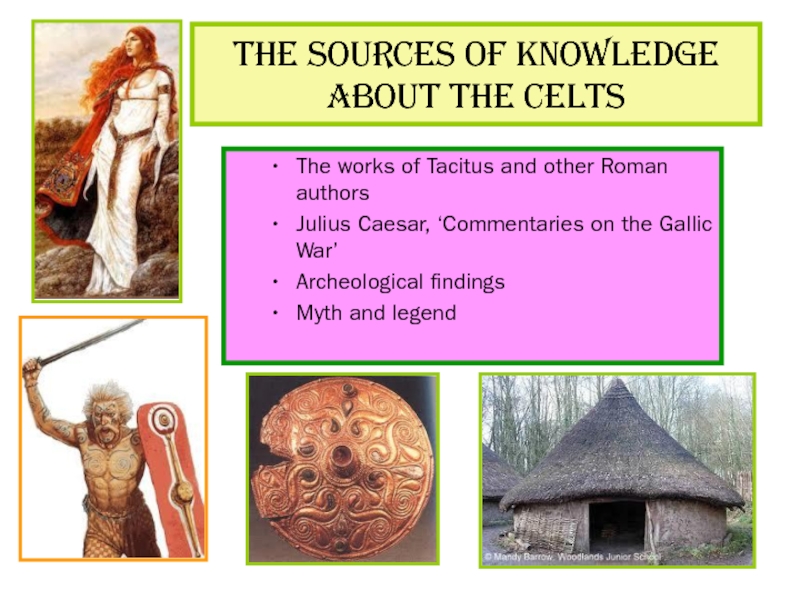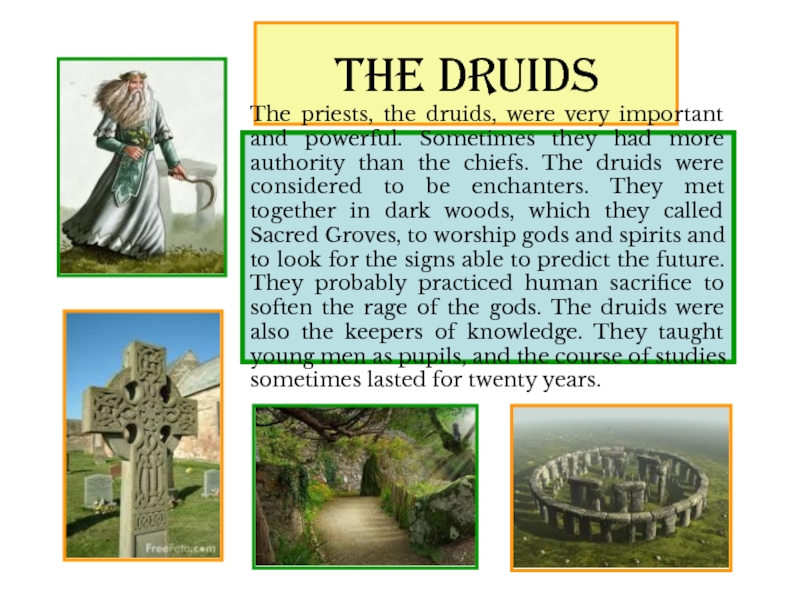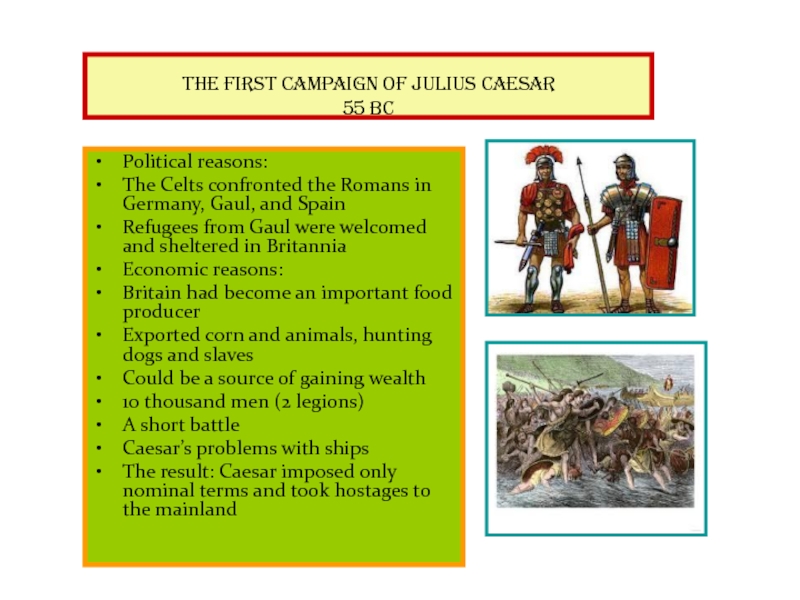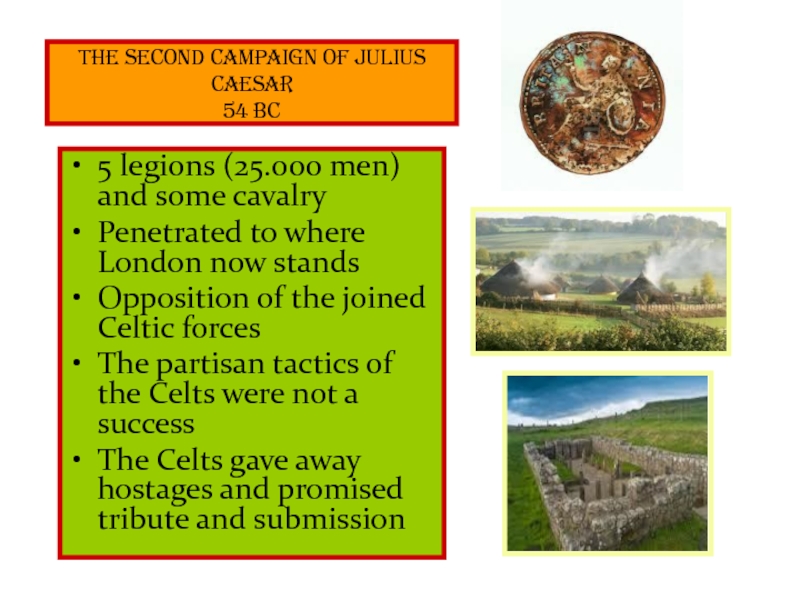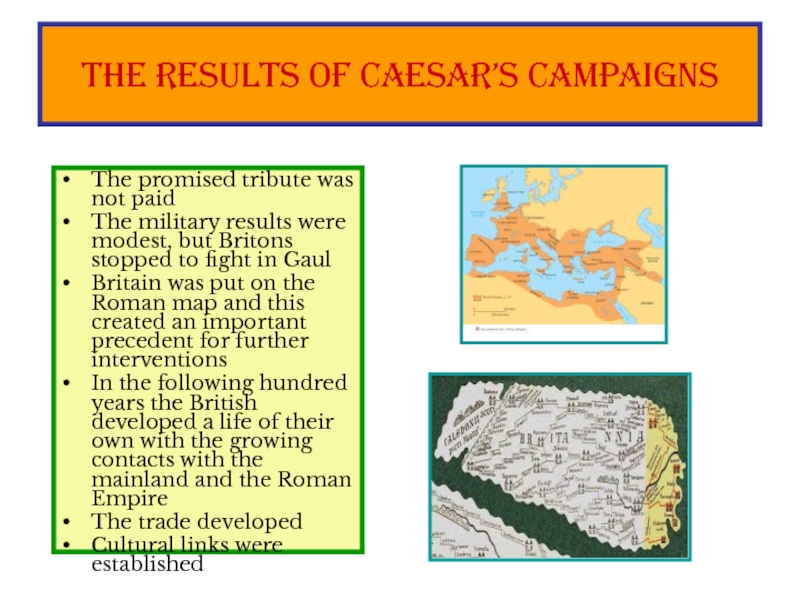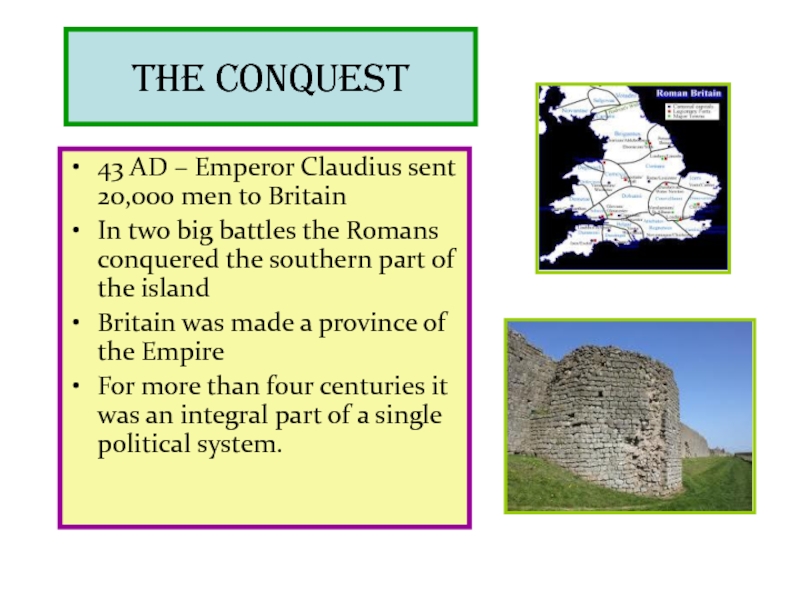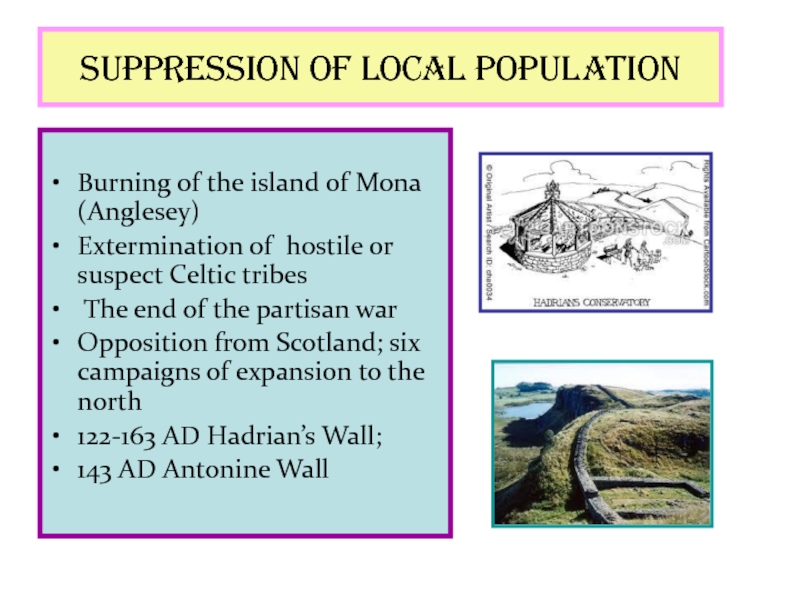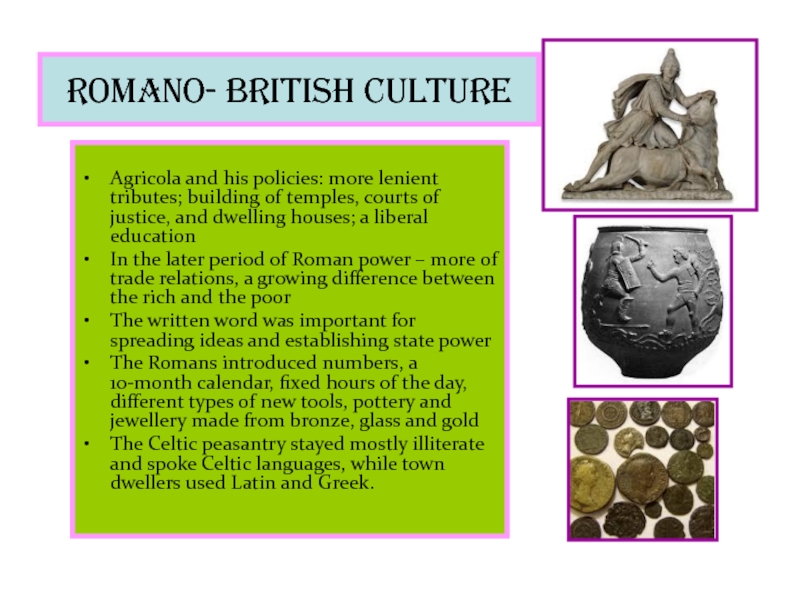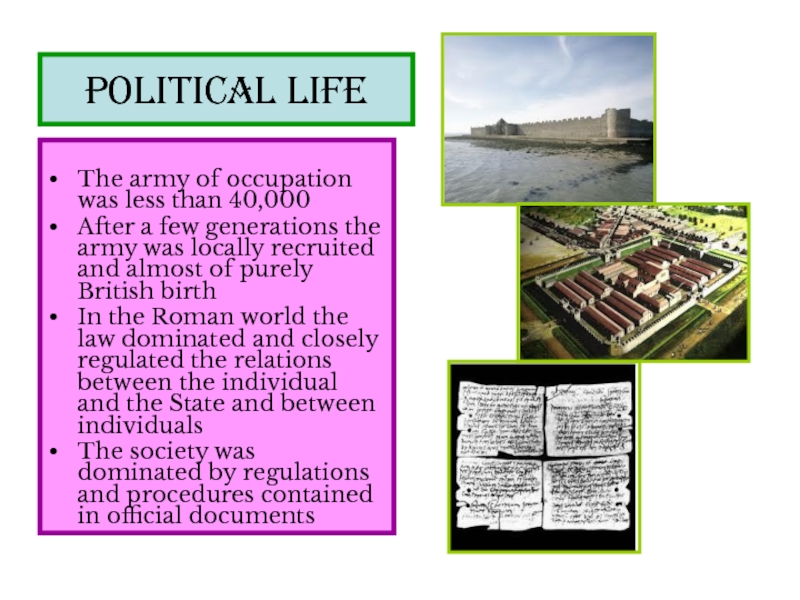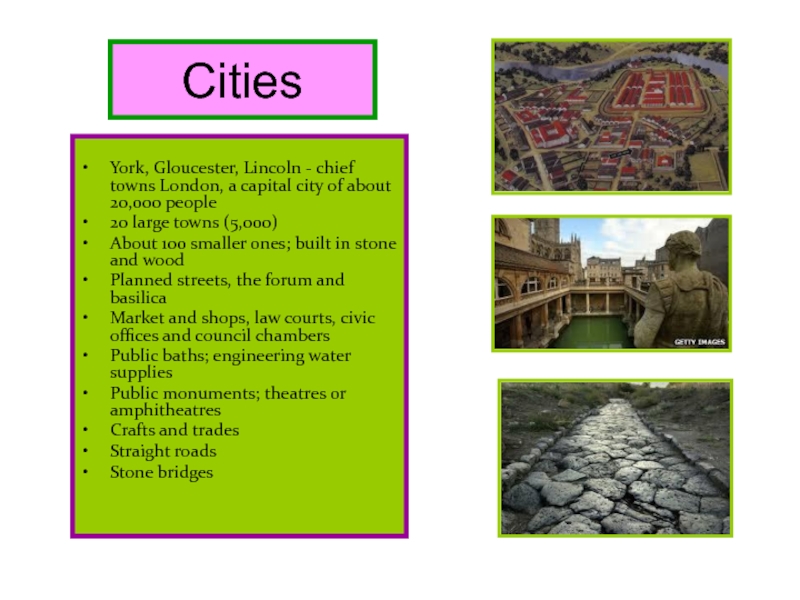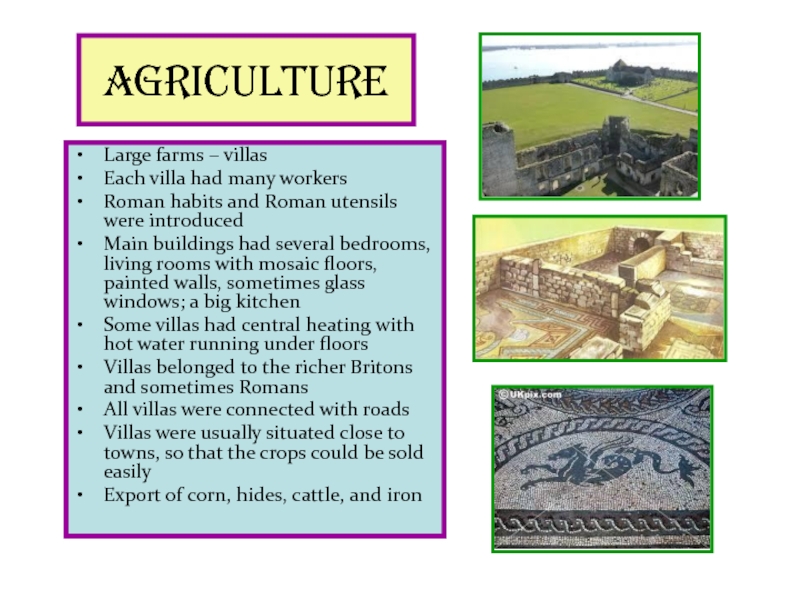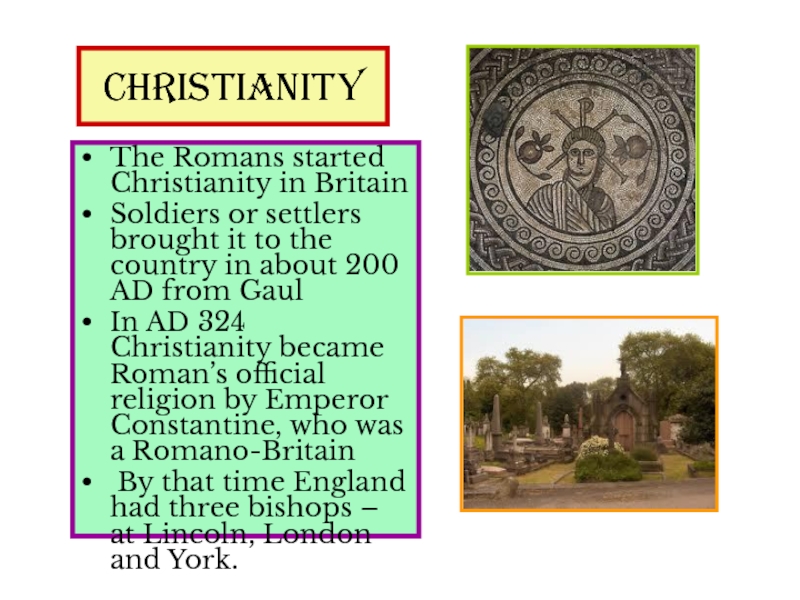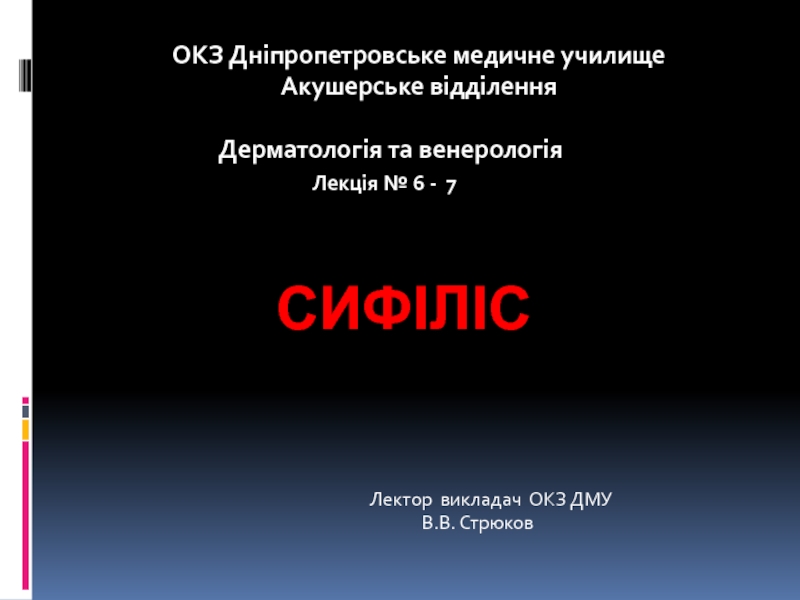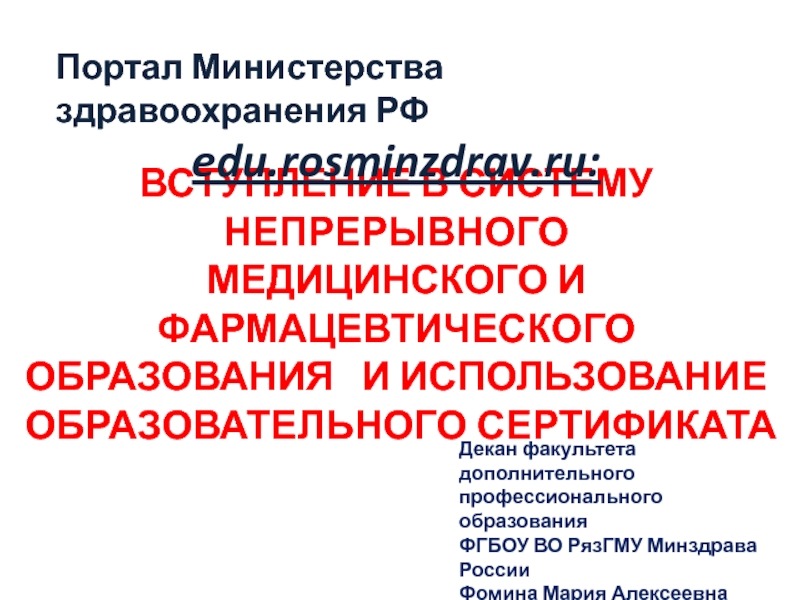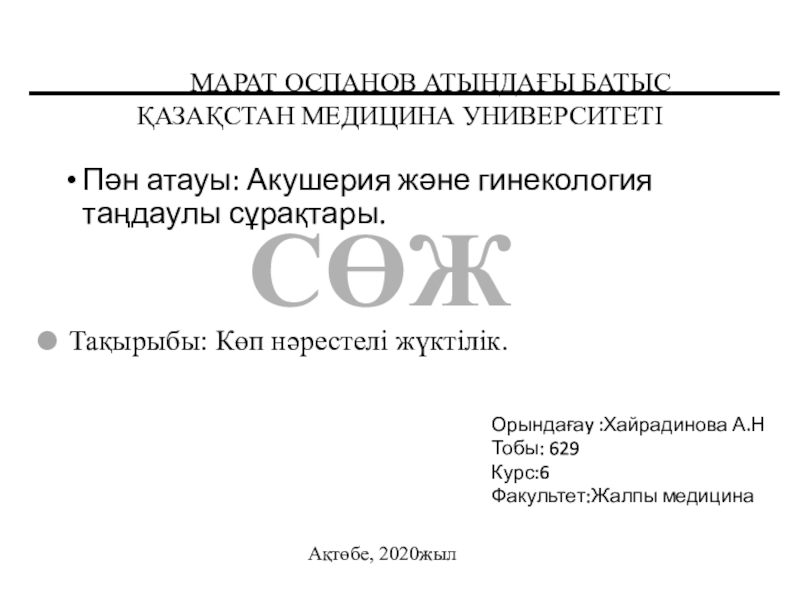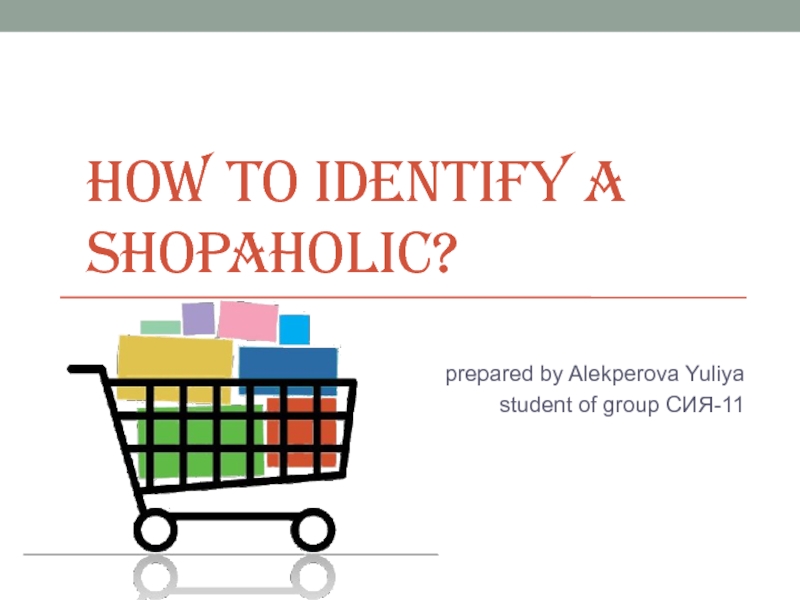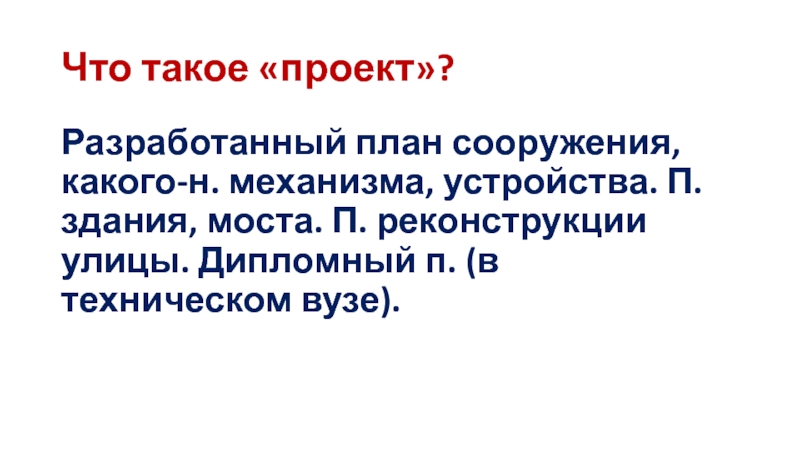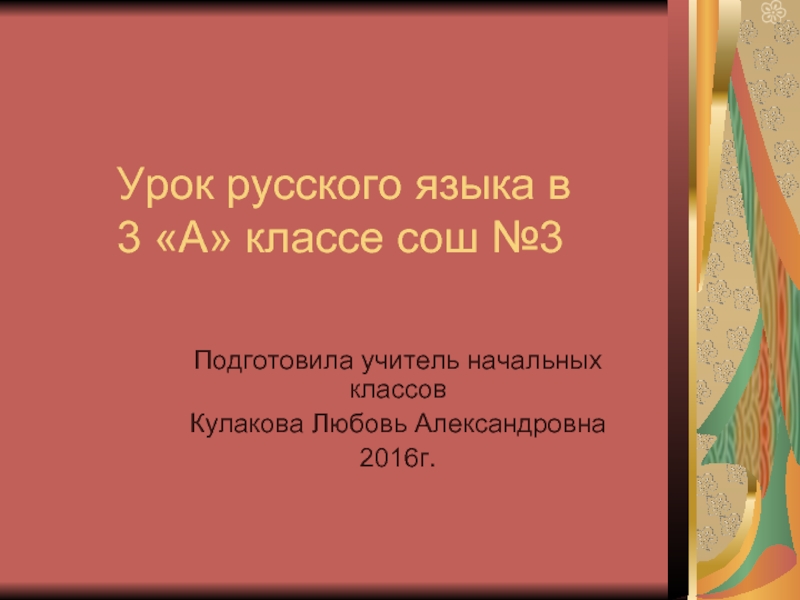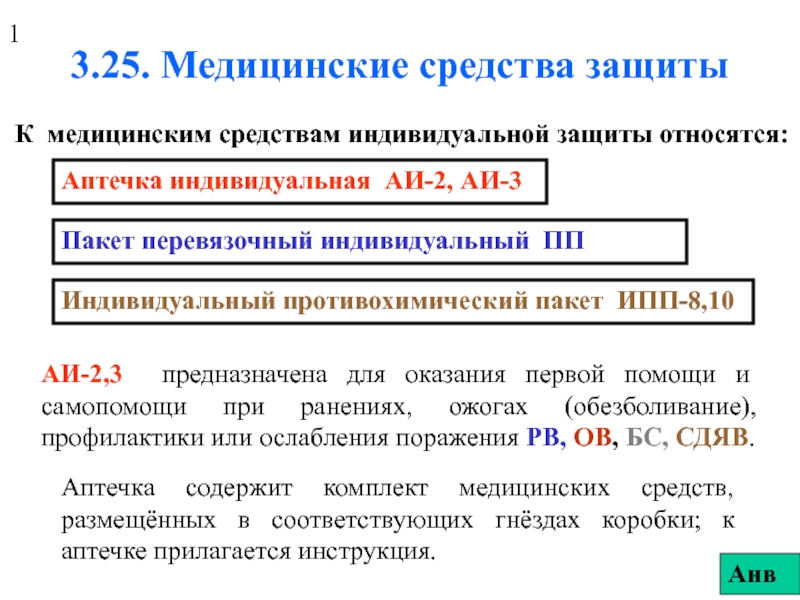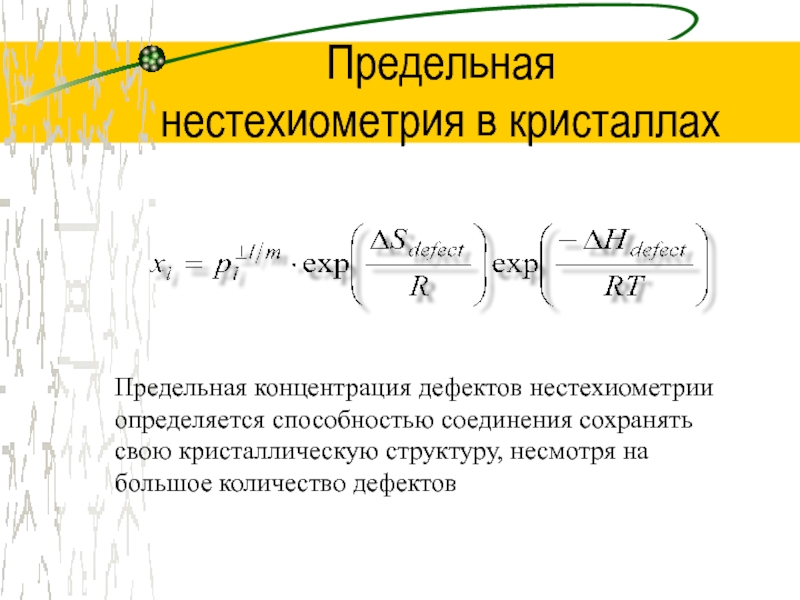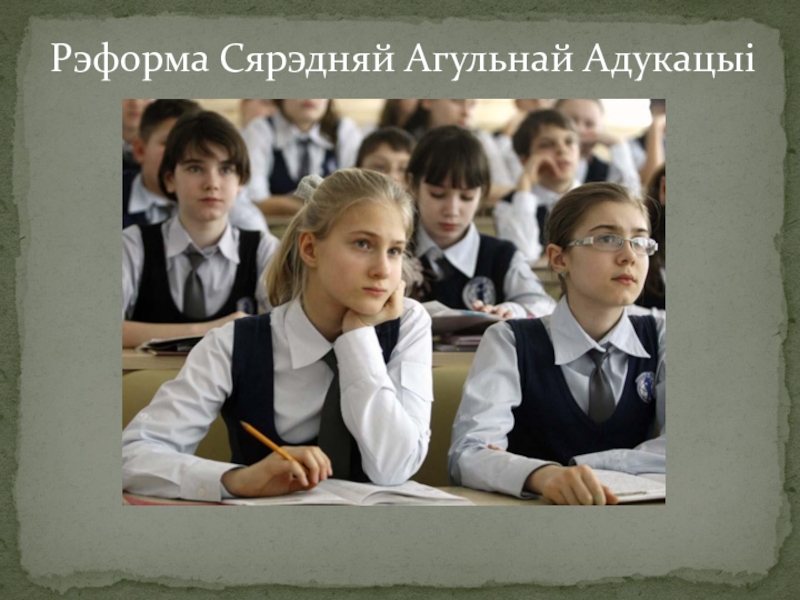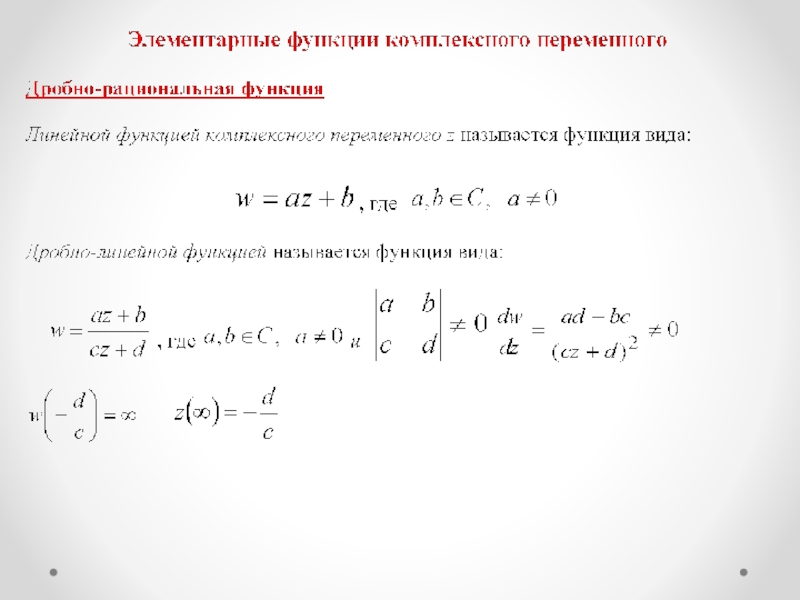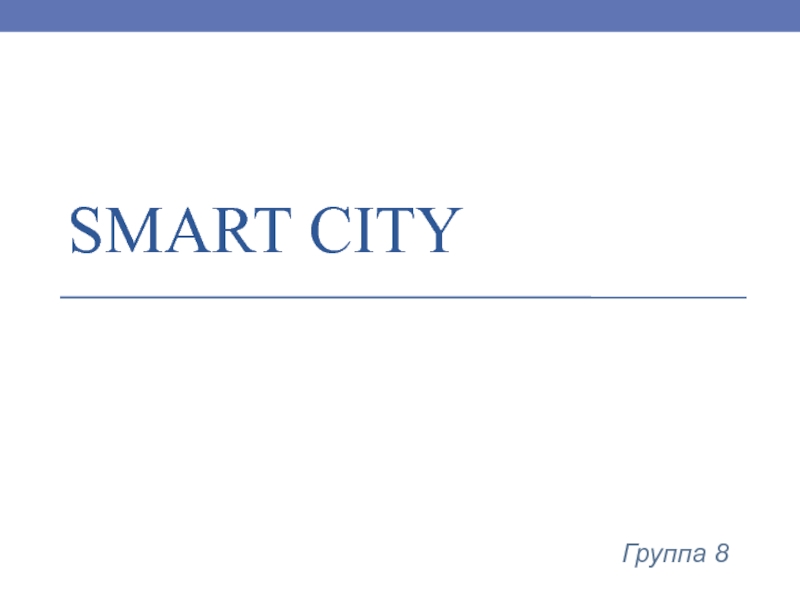Разделы презентаций
- Разное
- Английский язык
- Астрономия
- Алгебра
- Биология
- География
- Геометрия
- Детские презентации
- Информатика
- История
- Литература
- Математика
- Медицина
- Менеджмент
- Музыка
- МХК
- Немецкий язык
- ОБЖ
- Обществознание
- Окружающий мир
- Педагогика
- Русский язык
- Технология
- Физика
- Философия
- Химия
- Шаблоны, картинки для презентаций
- Экология
- Экономика
- Юриспруденция
ANCIENT PEOPLE ON THE TERRITORY OF THE BRITISH ISLES THE INVASION OF THE CELTS
Содержание
- 1. ANCIENT PEOPLE ON THE TERRITORY OF THE BRITISH ISLES THE INVASION OF THE CELTS
- 2. The earliest remnants250,000 years old – a
- 3. The Iberians3,000 BC – New Stone Age
- 4. The Beaker People After 2,400 BC
- 5. The Celts: the Gaels and the Brithons6th
- 6. The Celts: the BelgaeAbout 100 BC –
- 7. The sources of knowledge about the CeltsThe
- 8. The druidsThe priests, the druids, were very
- 9. The first campaign of Julius Caesar
- 10. The second campaign of Julius Caesar 54
- 11. The results of Caesar’s campaignsThe promised tribute
- 12. The Conquest43 AD – Emperor Claudius sent
- 13. Suppression of local populationBurning of the island
- 14. Romano- British CultureAgricola and his policies: more
- 15. Political LifeThe army of occupation was less
- 16. Cities York, Gloucester, Lincoln - chief towns
- 17. AgricultureLarge farms – villas Each villa had
- 18. ChristianityThe Romans started Christianity in BritainSoldiers or
- 19. Скачать презентанцию
The earliest remnants250,000 years old – a human skull, Swanscombe; primitive people, who lived on hunting and used rough flints200,000 years ago – stone hand-axes and other implements50,000 years ago –
Слайды и текст этой презентации
Слайд 1 ANCIENT PEOPLE ON THE TERRITORY OF THE BRITISH ISLES
THE INVASION OF THE CELTS. The romans
BC)Слайд 2The earliest remnants
250,000 years old – a human skull, Swanscombe;
primitive people, who lived on hunting and used rough flints
200,000
years ago – stone hand-axes and other implements50,000 years ago – open-air camps; the most ancient - near Clacton-on-Sea in Essex and Boxgrove in Sussex
35,000-40,000 years BC – caves in Somerset, Devon, Derbyshire and Kent; traces of occupancy left by Neanderthal man
10,000 BC – Old Stone Age men; hunters, gatherers and fishers; few homes
Around 6,000 BC – the end of the last Ice Age, Britain became an island
Слайд 3The Iberians
3,000 BC – New Stone Age or Neolithic people
(the Iberians):
a primitive agriculture
domesticated animals
pottery
earthwork enclosures on the hilltops
(Windmill Hill, Avery)flint used as weapons
Слайд 4
The Beaker People
After 2,400 BC – the Beaker people:
an Indo-European
language
military and metalworking skills
bronze tools and weapons
the first individual graves,
furnished with pottery beakers Слайд 5The Celts: the Gaels and the Brithons
6th to the 3d
century BC – the Celts
6th century BC – the first
wave, the Gaels; driven into the mountains of Wales and Scotland 600-500 BC – the second wave, the Brithons; settled in the South of England, in Wales, in Northwest England and Southwest Scotland; metal spears, swords, daggers and axes
About 500 BC – the first wheeled carts
About 400 BC – iron; a revival of the hilltop camps; development of the tribal system; no towns; hill-forts (Maiden Castle in Dorset) and farms, often surrounded by small enclosures; permanent fields, pastures.
Слайд 6The Celts: the Belgae
About 100 BC – the third wave,
the Belgae
Occupied the central part of the island
Chariots, horseman
Started to
build towns in the valleysIntroduced silver and copper coins
Слайд 7The sources of knowledge about the Celts
The works of Tacitus
and other Roman authors
Julius Caesar, ‘Commentaries on the Gallic War’
Archeological findings
Myth and legend
Слайд 8The druids
The priests, the druids, were very important and powerful.
Sometimes they had more authority than the chiefs. The druids
were considered to be enchanters. They met together in dark woods, which they called Sacred Groves, to worship gods and spirits and to look for the signs able to predict the future. They probably practiced human sacrifice to soften the rage of the gods. The druids were also the keepers of knowledge. They taught young men as pupils, and the course of studies sometimes lasted for twenty years.Слайд 9
The first campaign of Julius Caesar
55 BC
Political reasons:
The Celts confronted
the Romans in Germany, Gaul, and Spain
Refugees from Gaul were
welcomed and sheltered in BritanniaEconomic reasons:
Britain had become an important food producer
Exported corn and animals, hunting dogs and slaves
Could be a source of gaining wealth
10 thousand men (2 legions)
A short battle
Caesar’s problems with ships
The result: Caesar imposed only nominal terms and took hostages to the mainland
Слайд 10The second campaign of Julius Caesar
54 BC
5 legions (25.000 men)
and some cavalry
Penetrated to where London now stands
Opposition of the
joined Celtic forcesThe partisan tactics of the Celts were not a success
The Celts gave away hostages and promised tribute and submission
Слайд 11The results of Caesar’s campaigns
The promised tribute was not paid
The
military results were modest, but Britons stopped to fight in
GaulBritain was put on the Roman map and this created an important precedent for further interventions
In the following hundred years the British developed a life of their own with the growing contacts with the mainland and the Roman Empire
The trade developed
Cultural links were established
Слайд 12The Conquest
43 AD – Emperor Claudius sent 20,000 men to
Britain
In two big battles the Romans conquered the southern part
of the islandBritain was made a province of the Empire
For more than four centuries it was an integral part of a single political system.
Слайд 13Suppression of local population
Burning of the island of Mona (Anglesey)
Extermination
of hostile or suspect Celtic tribes
The end of the
partisan war Opposition from Scotland; six campaigns of expansion to the north
122-163 AD Hadrian’s Wall;
143 AD Antonine Wall
Слайд 14Romano- British Culture
Agricola and his policies: more lenient tributes; building
of temples, courts of justice, and dwelling houses; a liberal
educationIn the later period of Roman power – more of trade relations, a growing difference between the rich and the poor
The written word was important for spreading ideas and establishing state power
The Romans introduced numbers, a 10-month calendar, fixed hours of the day, different types of new tools, pottery and jewellery made from bronze, glass and gold
The Celtic peasantry stayed mostly illiterate and spoke Celtic languages, while town dwellers used Latin and Greek.
Слайд 15Political Life
The army of occupation was less than 40,000
After a
few generations the army was locally recruited and almost of
purely British birthIn the Roman world the law dominated and closely regulated the relations between the individual and the State and between individuals
The society was dominated by regulations and procedures contained in official documents
Слайд 16Cities
York, Gloucester, Lincoln - chief towns London, a capital
city of about 20,000 people
20 large towns (5,000)
About 100 smaller
ones; built in stone and woodPlanned streets, the forum and basilica
Market and shops, law courts, civic offices and council chambers
Public baths; engineering water supplies
Public monuments; theatres or amphitheatres
Crafts and trades
Straight roads
Stone bridges
Слайд 17Agriculture
Large farms – villas
Each villa had many workers
Roman habits
and Roman utensils were introduced
Main buildings had several bedrooms, living
rooms with mosaic floors, painted walls, sometimes glass windows; a big kitchenSome villas had central heating with hot water running under floors
Villas belonged to the richer Britons and sometimes Romans
All villas were connected with roads
Villas were usually situated close to towns, so that the crops could be sold easily
Export of corn, hides, cattle, and iron
Слайд 18Christianity
The Romans started Christianity in Britain
Soldiers or settlers brought it
to the country in about 200 AD from Gaul
In AD
324 Christianity became Roman’s official religion by Emperor Constantine, who was a Romano-BritainBy that time England had three bishops – at Lincoln, London and York.
